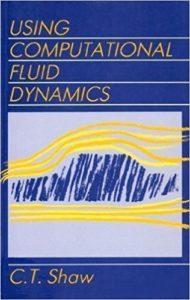Using Computational Fluid Dynamics
Using Computational Fluid Dynamics
Computational Fluid Dynamics (CFD) described as the use of computers to produce information about the ways in which fluids flow in given situations. CFD embraces a variety of technologies including mathematics, computer science, engineering and physics, and also these disciplines have to be brought together to provide the means of modelling fluid flows. Such modelling is used in many fields of science and engineering but, if it is to be useful, the results that it yields must be a realistic simulation of a fluid in motion. At present this depends on the problem being simulated, the software being used and also the skill of the user.
Until recently the user of CFD has been a specialist, probably trained to doctoral level, working in a research and development department. Now, however, the technology is more widely available both in industry and academia and so to provide insights into many aspects of fluid motion. This increasing use has come about as there are now numerous commercial CFD software packages on the market and so it is not necessary for users to have to write their own programs in order to obtain flow results.
You can also read Numerical Grid Generation Foundations and Applications 1st Edition
Using Computational Fluid Dynamics Product details
- Paperback: 300 pages
![Computational Fluid Dynamics]()
- Publisher: Prentice Hall (July 1, 1992)
- Language: English
- ISBN-10: 0139287140
- ISBN-13: 978-0139287145
- Package Dimensions: 8.4 x 5.8 x 0.7 inches
- Shipping Weight: 12.6 ounces
Using Computational Fluid Dynamics Content
- Preface
- Introduction
- Fluids in motion
- Numerical Solution to partial differential equation
- Computer based analysis procedures and tools
- Describing flow problems in Engineering
- Building A mesh
- Setting the fluid flow parameters
- Obtaining a solution
- Analysis the results
- Some case studies
- Modelling flows with additional complexity
- Acquiring CFD technology
- Appendix A phoenics results for a simple
- Laminar Flow
- References
Whilst the software is widely available, the means of learning about Computational Fluid Dynamics and how to produce simulations with it tends restricted to post-experience courses in universities and polytechnics, where the level of assumed knowledge can be too great.


Comments are closed.